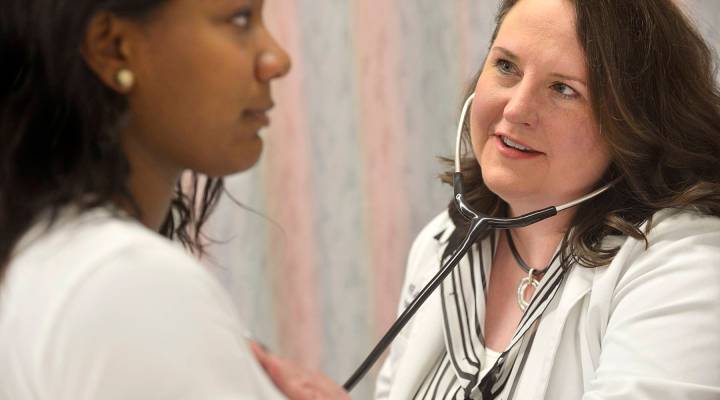
Lack of nurse educators is likely contributing to the nurse workforce shortage
Lack of nurse educators is likely contributing to the nurse workforce shortage

Nursing shortages are forcing hospitals to close beds, hire temporary nurses at great expense to fill the gap and possibly provide less than optimal care to patients. The problem is not just that people aren’t going into nursing, but also that existing nurses aren’t going into education.
“I find that teaching challenges me as a provider because I always have to stay on top of what’s new and what’s best, but I would love to teach more, but there are a lot of disincentives to do that,” said Anna Kent, a certified nurse practitioner who works as a midwife in Martinsburg, West Virgina. As part of her job, she supervises medical and graduate nursing students.
The main disincentive to teach full time, she said, is financial. “I would make about a third of what I’m making.”
In West Virginia, nurse practitioners earn an average of around $93,000 a year while nursing faculty with graduate degrees earn about $59,000.
“Unless you really have a passion and a desire to be a nurse educator, we don’t see people migrating to that field, because of the pay,” said Ron Moore, the recently retired vice president for nursing at Charleston Area Medical Center.
| Working as a nurse, but wishing to be a mom |
| Nurse-led clinics: No doctors required |
CAMC currently has about a 300 nurse workforce shortage. Moore said without qualified nursing faculty to teach the people who want to be in a nursing program, states like West Virginia aren’t going to be able graduate enough nurses to meet the needs of its aging population. “So without an adequate workforce, hospitals can’t function to their capacity,’ said Moore.
“And we’ve seen that, we’ve seen hospitals have to close portions of a hallway or an entire floor or an entire wing when they don’t have adequate RN staffing,” said Toni DiCiacchio, president of the West Virginia nurses association.
But nursing programs are trying new strategies to bring more people into the profession. For instance, schools are launching online nursing programs, but the reach is limited because parts of rural West Virginia don’t have access to the broadband needed for students to take the classes.
And Moore said CAMC launched a new “junior nursing academy” this summer to try and get middle school students interested in the profession. But even if those students want to go into nursing when they’re older, there may not be a spot for them in a nursing program.
And until salaries improve for nurse educators, the shortage of teachers is unlikely to change.
There’s a lot happening in the world. Through it all, Marketplace is here for you.
You rely on Marketplace to break down the world’s events and tell you how it affects you in a fact-based, approachable way. We rely on your financial support to keep making that possible.
Your donation today powers the independent journalism that you rely on. For just $5/month, you can help sustain Marketplace so we can keep reporting on the things that matter to you.












